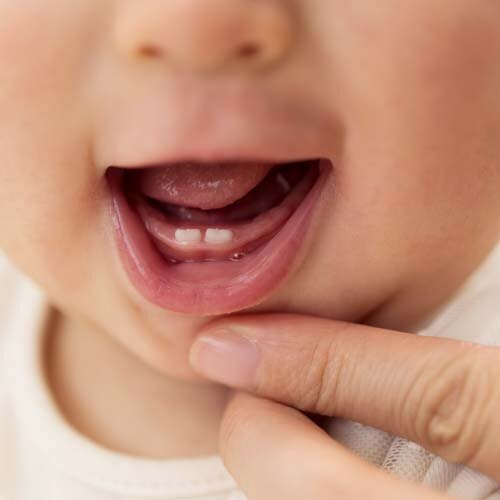
It can be shocking for a parent to see their kid having an extra row of the tooth. This can be in front or behind your baby teeth or an extra tooth coming between the two incisors. Though this is concerning for both parents and the kids, you still need to know some general facts about this extra row of the tooth.
This happens in kids of the age group of 6 to 7 years. A condition that is called Hyperdontia. Here you will see an extra tooth or double milk teeth (ฟันน้ำนมซ้อน, term in Thai) coming up near the deciduous or permanent teeth (also named supernumerary teeth). This condition can be uncomfortable and painful for some kids as it may affect their speaking and eating abilities. But for many, it might not show any signs of effects.
Normally a permanent tooth just develops beneath the baby tooth. So, when it is erupting, it makes the root behind the baby tooth dissolve and the new tooth takes its place. If this doesn’t happen, then the new tooth will make its place adjacent to the baby tooth. That is the reason it appears like a shark tooth.
As a parent, here are certain facts that you need to know about hyperdontia:
1. Hyperdontia can affect different types of kids
Hyperdontia can happen to both boys and girls. But boys are twice as likely to get this double tooth as compared to girls. This can be noted when their baby teeth begin to fall off during their early school days.
Other than this, it can affect kids having certain childhood anomalies and diseases like
- Cleft lip
- Cleft palate
- Gardner’s syndrome
- Down syndrome
- Cleidocranial dysplasia
- Ehlers-Danlos syndromes
There is just a 2% chance of other kids getting this and the reason might be genetic.
2. Supernumerary teeth are seen in several forms
Hyperdontia can be seen on either side of the mouth or in the front teeth. They may grow in between the teeth or jammed against the teeth. They are four types:
- Conical which is of corn shaped or pegs
- Tuberculate which has extra growths and they rarely erupt
- Supplemental which looks like the real teeth
One more type is called the odontoma. In this masses are grown in the dental region which might or might not have any portions like teeth.
3. If left untreated can cause problems for kids
These supernumerary teeth not only keep the permanent teeth from erupting, but get fused with them. This results in cavities, abscesses, and other infections as the brush doesn’t reach every corner of the teeth. Other than this there can be problems like:
- Movement and displacement of the permanent teeth
- They resorb the roots of the adjacent teeth
- Chances of formation of cyst and tumor
- Abnormal facial expression
- Speech and eating problems
The good news is this can be treated as it can be detected at an early stage.
4. Supernumerary teeth if problematic should be removed
In many cases, supernumerary teeth do not cause any problems. But in many, it causes pain and can be harmful to the adjacent teeth. In such cases, a dental surgeon can remove this tooth safely.
A routine dental check-up with the dentist can help you identify the tooth and can get the treatment at an early stage.



